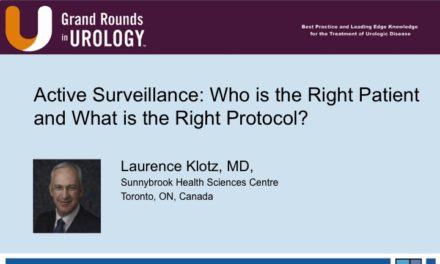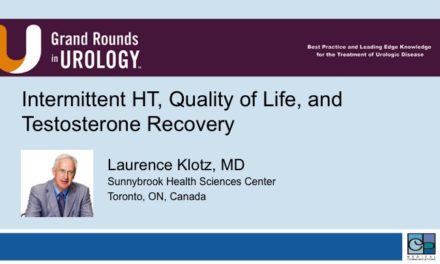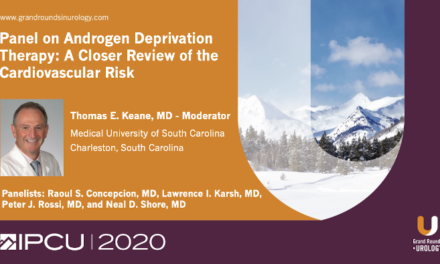Arvin K. George, MD, presented “Optimizing Biopsy Approach Before Precision Prostatectomy” during the 26th Annual Southwest Prostate Cancer Symposium conference on April 13, 2023, in Scottsdale, Arizona.
How to cite: George, Arvin K. “Optimizing Biopsy Approach Before Precision Prostatectomy.” April 13, 2023. Accessed Apr 2024. https://grandroundsinurology.com/optimizing-biopsy-approach-before-precision-prostatectomy/
Optimizing Biopsy Approach Before Precision Prostatectomy – Summary
Arvin K. George, MD, reviews the strengths and limitations of prostate magnetic resonance imaging (MRI), identifies strategies to optimize the detection of clinically significant prostate cancer, and reviews outcomes of precision prostatectomy. Dr. George begins by addressing the weak predictive value of multiparametric MRI (mpMRI,) calling it imperfect. However, data from the PROMIS study supports mpMRI over transrectal ultrasound (TRUS.)
Dr. George cites data on MRI-targeted, systematic, and combined biopsy for prostate cancer diagnosis, and defines precision prostatectomy as a subtotal prostatectomy that preserves tissue and nerves. Dr. George illustrates two scenarios to support the use of precision prostatectomy in conjunction with a 3D ultrasound to guide treatment—one for biopsy-naive patients and the other for patients with prior biopsy. He then shares data on precision prostatectomy outcomes, in which all patients maintained social continence and 85% of patients maintained potency after one year.
In regards to remission rates, only 6.6% of post-mpMRI biopsy patients presented with clinically significant prostate cancer at 36 months, with over 90% of patients requiring no secondary treatment. Dr. George reiterates that mpMRI is not perfect, but its preservative effects on patients makes it worth further exploration.
About the 26th Annual Southwest Prostate Cancer Symposium:
This conference educated attendees about advances in the management of localized and advanced prostate cancer, with a focus on imaging, technology, and training in the related devices. It included a scientific session, as well as live demonstrations of surgical techniques. You can learn more about the conference here.




